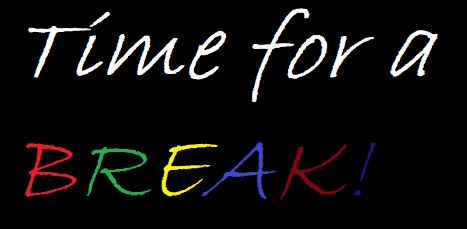Instructional Strategies
What are instructional strategies and why are they important?
Whether you recognize it or not, almost everything you do in the classroom is an instructional strategy. For example, when you’re standing at the front of the room sharing new content with learners and helping clarify what’s written on class slides, you’re engaging with a “direct” instructional strategy. If you then invite learners to join small groups so that they can try to solve a complex math problem by applying a new formula you just shared, they are now taking part in an “interactive” instructional strategy. Perhaps you’ve just discussed environmental sustainability and renewable energy techniques in class and want to show students a practical example, so you take a walk to Conestoga’s “solar field” in Cambridge. This on-campus field trip would be part of an “experiential” learning strategy.
Expert teachers recognize that a diverse group of learners will respond differently to various strategies and that certain learning outcomes are better taught using one strategy over another. They therefore intentionally incorporate several different strategies into a single class meeting (Fornari & Poznanski, 2021; Staake, 2023).
Below you’ll find a list of 5 different types of instructional strategies (Direct; Indirect; Interactive; Experiential; and Independent) and examples of methods for each. You’ll note that some example methods may fall under more than one strategy category, depending on the specifics of your lesson. It may be helpful to think of these examples as “tools” in your teaching toolkit that you’ll become increasingly familiar with. Over time, it will become more and more clear when, where, and how to use them to keep your lessons engaging and relevant and to help students achieve specific learning outcomes.
Direct
This strategy puts the teacher at the centre of the classroom; positioning them as the expert in the room on a certain topic. Even though we favour student-centred approaches to teaching and learning at Conestoga, and advocate for increased active learning opportunities, there are moments when direct instruction is necessary. For example, if you’re teaching in the motive power technician program, you’ll probably want to clearly demonstrate step-by-step for students how to complete a specific mechanical operation before learners are given an opportunity to try it themselves. Or, if you’re teaching about concepts of gender and want students to better understand the meaning of “hegemonic masculinity”– you’ll likely want to define the term, outline its history, and provide some effective examples via direct instruction before asking students to relate the concept to their own lives and popular culture today in more indirect or interactive ways. In order to maximize student engagement, we generally advise faculty teaching at Conestoga to try to limit direct instruction/ “chalk and talk” to ~ 20 minute intervals before moving on to another strategy. Some methods associated with direct instructional strategies are:
- Lecturing
- Demonstration
- Step-by-step instructions
- Structured overview
- Didactic questions (e.g. “when was this law created?” or “which button do we push first when…”
Indirect
When it comes to indirect instructional strategies, faculty typically act more as a “guide” than the expert in the room. This strategy is learner-led and assists in the development of higher-order and critical thinking skills. For example, in a business management class, having discussed specific organizational behaviour concepts, you might then set students up to work on a case study, such as those found in the Open Access Teaching Case Journal so learners can see if and how theories and strategies discussed in course readings might apply to particularly complex business situations. Such approaches work well when teaching virtually too; such as this example of a padlet photo exercise, where students in a Zoom class are asked to take a photo of a particular type of motor in their living space, and share it with the class. Some other indirect teaching strategies include:
- Reflective large group discussions that are sparked by higher-order thinking questions
- Concept mapping
- Think-pair-share
- Brainstorm/ brain dump
- Mentimeter (word cloud or quiz)
- Padlet
- Polls
- Zoom annotation activities
- Discussion boards
- Memory game
- Risk assessments
Interactive
The goal of this particular strategy is to have learners engage with one another to share perspectives and opinions; problem-solve; and develop vital interpersonal skills that will serve them well when they work in collaborative workplaces after graduation. Interactive learning is often linked to inclusive teaching practices and has been proven to help learners retain knowledge more effectively; achieve higher-order learning measures according to Bloom’s taxonomy; and be more successful on assessments (Freeman et al., 2014; Staake, 2023). There are many interactive methods/ activities one might use. They may be short and simple, or take up a significant portion of class time. For example, in a course designed for internationally educated nurses about professional practice in the Canadian health care system, the faculty member might open the lesson using a MentiMeter word cloud to invite students to share values they believe are vital in health care in order to assess student feelings and beliefs on the topic before sharing additional content. For an example of an extended interactive learning experience in an Early Childhood Education class, where students are encouraged to synthesize cognitive, psychomotor, and affective knowledge, skills, and attitudes you may want to listen to this podcast interview with Conetsoga’s Tricia Dumais. Some other interactive instructional strategies include:
- Jigsaw
- Think-pair share
- Debates
- Roleplay
- Breakout room or small group discussions
- Shared OneDrive documents
- Interviews
- Brainstorming
- Process mapping in groups
- Learning cells
- H5P
Experiential
Experiential instructional strategies allow students to learn by “doing”. These might look like field trips, or end-of-semester simulation/ role-plays (where, for example, policing students might practice de-escalating tactics with a live actor playing a character in the midst of a mental health crisis; or where students in Conestoga’s esthetician program perform real manicures on volunteers who come into the class pretending to be spa patrons). One very special example of experiential learning at Conestoga is Bloom Restaurant: located on the Waterloo campus, Bloom is an “interactive live classroom where students are given the opportunity to practice a high level of service to paying guests.” These experiences tend to feel authentic for students and to prepare them for the work world in unique and powerful ways. In this Podcast episode, you can hear Professor Rob Straby speak about the power of experiential learning as students engage in “real plays” as part of his Career Development Professional Course. If using experiential instructional strategies, it is advisable that faculty carefully and thoughtfully pre-brief and de-brief the learning with students. (I.e. to explain to them in advance what this unique learning opportunity will bring to them and how it connects to course or unit learning outcomes, and then during and after the experience check-in with students about how they are feeling–what went well for them, what they might do differently next time etc.). These experiences can help students clarify their own values, develop key skills, and engage them intellectually, physically, and emotionally (Misseyanni et al., 2018). A few other examples of experiential instructional strategies include:
- Roleplay
- Storytelling
- Surveys
- Field observations/ Field trips (note: there is a procedure for off-campus activity which requires prior approval from your Chair and the completion of an off-campus activity form)
Independent
Independent instructional strategies can help encourage students to reflect on course learning in ways that are most effective for them. Teaching methods associated with this strategy can help foster critical reflection and self-confidence among students and encourage self-efficacy (Melzer & Bean, 2022). This type of strategy allows students to work at their own pace, and is associated with methods such as essay writing; individual presentations on a topic of one’s choice, journaling, or individual creative assignments. While faculty provide clear instructions and make themselves available to offer guidance and support, these approaches are primarily student-led. For example, in an animation course about character design and development, students might be given an opportunity, over the duration of the semester, to imagine a story and characters that are meaningful to them individually, and to incorporate specific aesthetic approaches and animation techniques that they feel best suit the narrative they are creating. In this podcast episode, Rajul Singh discusses an independent “sticker book” reflection activity from her course on sustainable business management that has students considering, over the semester, what sustainability means to them personally, and what actions they might take.
- Essays
- Research projects
- Journaling
- Podcast
- Video presentation
- Creative responses
- Reading responses
- Silent reading
How students may respond
As noted, it is best that faculty use a variety of instructional strategies when teaching any course. That said, the tools/ activities associated with these strategies that you invite students to take part in will, in many cases, be new and unfamiliar to them. For this reason, it is important that you a) communicate instructions and expectations clearly, b) are intentional about your choices and c) communicate to students how and why these approaches connect to course and unit learning outcomes and will help set them up for success in the work world.
If students know exactly why they are being asked to engage in certain activities with peers or on their own, they are more likely to set aside their hesitation and “buy in” to try something different. Note that there may also be an adjustment period for both you and your students when you begin to diversify your strategies and related activities. If something doesn’t work right away, give it time. Or consider how your method might be altered slightly to better meet the needs of a particular group of students. You are also encouraged to solicit learner feedback and adapt your future lessons accordingly. Hilpert (2016) reminds us that professionals in different fields will be required to think and act differently on the job. For example, firefighters and paramedics will likely need to master “fast unconscious processing” in order to solve problems in the field, whereas other professionals such as business leaders or engineers may more often have occasions that require “slow, unconsious processing” that is linked to conceptual change (Hilpert, 2016, p. 12). Reflecting on how students will be expected to think and act on the job post-graduation, can also help you decide which type of instructional strategies and related methods will feel most authentic for learners. Over time, both you and students are likely to see that diversifying instructional strategies encourages engagement, promotes equity (and is in keeping with Universal Design for Learning principles); improves knowledge retention; and makes classes more enjoyable for all involved.
Instructional Strategies and Diverse Students
When well thought out and considerately facilitated, diversifying your instructional strategies can also serve as an inclusive classroom practice; allowing new and different ways for all students to share their perspectives and participate in the learning process. When lesson planning and considering which strategies and associated tools/ activities you’ll invite students to take part in, it’s also important to remember that students bring with them a whole host of expectations and fears when they enter the classroom, and so also considering how you’ll guide students through these activities in ways that make them feel safe and inspired will go a long way in promoting buy-in. Many of our students also come from equity-seeking communities (they may be racialized, neurodivergent, or otherwise marginalized) so offering students some element of choice when it comes to how they may want to participate in these activities or respond to certain prompts, is often empowering for them. For example, in this podcast episode, you’ll see how faculty member Lindsay Richardson provided options within the existing framework of an interactive lesson for food processing technician students so that the learning was more fun, relevant, and inclusive. These resources about supporting international students and ensuring lessons are accessible may also be of assistance.
Additional Learning
If you would like to dive deeper into exploring some of the methods discussed in this post, please check out the micro-credentials offered by our Teaching and Learning team. For example, you may want to learn more about using Role Play in your classes as an experiential learning or assessment tool, or to explore the many collaborative and team-based learning techniques that may be a good fit for your courses. Additional resources on active and problem-based learning are also available to you.
References
Fornari, A., & Poznanski, A. (Eds.). (2021). How-to Guide for Active Learning. Springer International Publishing AG. https://ebookcentral-proquest-com.conestoga.idm.oclc.org/lib/conestogac/detail.action?docID=6628954.
Freeman, S., Eddy, S.L., McDonough, M., Smith, M.K., Okoroafor, N., Jordt, H., & Wenderoth, M.P. (2014). Active learning increases student performance in Science, Engineering, and Mathematics. Proceedings of the National Academy of Sciences of the United States of America 111(23), 8410-8415.
Hilpert, J., (2016). A Multivariate Examination of Active and Interactive Learning and Student
Engagement in Post-Secondary Engineering Energy Science Classrooms: The
”Why” of Instructional Strategy Use. American Society for Engineering Education.
Melzer, D, and Bean, J.C. (2022) Engaging Ideas : The Professor’s Guide to Integrating Writing, Critical Thinking, and Active Learning in the Classroom, John Wiley & Sons. https://ebookcentral-proquest-com.conestoga.idm.oclc.org/lib/conestogac/detail.action?docID=6632622Misseyanni,
Misseyanni, A.; Lytras, M.D.; Papadopoulou, P. & Marouli, C. (2018). Active Learning Strategies in Higher Education : Teaching for Leadership, Innovation, and Creativity: Vol. First edition. Emerald Publishing Limited.A.,
Staake, J (2023). What are instructional strategies and how should teachers use them? We Are Teachers. https://www.weareteachers.com/instructional-strategies/
Teaching as decision making (n.d.). https://www.webpages.uidaho.edu/cte492/Modules/M3/Methods-Strategies.htm
University of California Davis (UC Davis). (2011). 5-step experiential learning cycle definitions. https://www.experientiallearning.ucdavis.edu/module1/el1_40-5step-definitions.pdf



